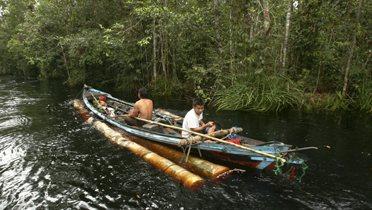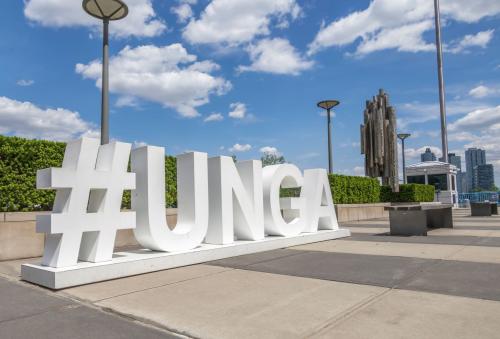INTRODUCTION
The last quarter of 2010 brought important positive news for the world’s forests. In October, the Food and Agricultural Organization (FAO) released data (self-reported by governments and sometimes of dubious accuracy) showing that global deforestation in 121 tropical countries during the 2000s slowed down compared to the 1990s: From 28 million acres of tropical forest lost on average in the 1990s, 23 million acres were lost in the 2000s. Important reductions took place in some of the major areas of tropical forest loss, such as Brazil and Indonesia.
In December 2010, at the Cancun climate change summit, parties to the UN Framework Convention on Climate Change (UNFCC) agreed to slow and perhaps reverse forest loss and related carbon-emissions in developing countries. Under a plan known as Reducing Emissions from Deforestation and Degradation (REDD+), whose critical details are yet to be worked out, countries and entities concerned with reducing carbon emissions and preserving forests have agreed to pay developing countries to reduce cutting down their forests and to reforest. REDD+ is perhaps the most dramatic manifestation of the increasing trend to price previously undervalued ecological services provided by forests, such as carbon capture, and possibly one of the greatest hopes for natural forest and biodiversity preservation. Developing market pricing mechanisms for natural forest ecosystems, including carbon market pricing mechanisms, will finally place a value on natural forests and perhaps their biodiversity, as opposed to merely timber or land, and thus could reduce the contradiction between environmental preservation and the economic imperatives many countries with intense deforestation are experiencing.
Furthermore, legal requirements in the West prohibiting the import of illegal timber or mandating government procurement of legally-certified timber are increasingly sending strong market signals to decrease the availability of illegal timber in Western countries with strong sensitivity toward timber legality. The effects of such measures, such as the 2008 Expansion of the Lacey Act in the United States and the 2010 adoption of due diligence requirements on timber legality by the European Union, are far less pronounced in Asia and other emerging markets and developing countries, including Brazil and Africa, where environmental sensitivities tend to be far lower. Nonetheless, the increasing Western focus on mandating timber legality is starting to reverberate even in those less sensitive markets.
Overall, global awareness of illegal logging and deforestation has expanded greatly over the past two decades.3Various measures to address illegal logging and maintain forest biodiversity, such as certification of sustainably and legally logged timber and forest management plans are increasingly being adopted throughout the world, including in the Asia-Pacific region. Although these measures are often highly imperfect, their prevalence and intensity have increased substantially, and in some cases there are signs of at least their partial effectiveness in preserving timber and even forests.
But these positive developments should give no reason for complacency. Deforestation and illegal logging still continue at a massive, unsustainable, and critically environmentally damaging pace. Southeast Asia and the Asia-Pacific region more broadly—the focus of this article, and one of the world’s most important hotspots of biodiversity—is unfortunately also an area of the most intense deforestation in the world, with devastating and irreparable effects on its and the world’s forests and ecosystems. With illegal logging accounting for a very large portion of forest destruction in the region, Southeast Asia has one of the highest rates of deforestation of any major tropical region. At the peak of logging in the region, in the mid- and late 1990s, nearly 1.2% of forest was lost yearly, followed by South America (0.8%), and Africa (0.7%). Positively, during the 2000s, Southeast Asia’s logging fell from an average of 5.9 million acres lost annually in the 1990s to 1.73 million acres annually in the 2000s, a significant decrease in the rate of deforestation.5Illegal logging too has experienced significant reductions in some of the Asia-Pacific countries during the 2000s. The extent of South America’s and Africa’s deforestation now surpasses that of Southeast Asia’s. Some countries in the Asia-Pacific region, such as China have actually reforested land. But deforestation, forest degradation, and illegal logging in Southeast Asia continue to threaten the remaining pockets of biodiversity of global significance in the region and the survival of many endangered species, and contribute to global warming.
Moreover, many of the new trends and policy developments that are giving hope for the world’s forests could entail hidden dangers. First of all, even salutary policies adopted at the strategic level often die in implementation: As this article shows for illegal timber, policy implementation is often beset by numerous challenges and problems, including weak execution and enforcement. Without diligence and maintained focus, any improvements in policies and outcomes regarding illegal logging and deforestation could easily dissipate.
Second, in many of the policy designs seeking to mitigate illegal and problematic logging, forestry plans often problematically prioritize the sustainability of economic revenues over environmental concerns, such as biodiversity preservation. Such policy designs also determine how complementary or adverse various environmental objectives are to each other: A certain design of the carbon-for-forest payoffs could indeed be a part of the salvation for the world’s natural forests and their biodiversity; others could privilege reforestation without biodiversity protection. At the core of some of the surprising contradictions and trade offs is the paradoxical fact that the loss of timber and the loss of forests are not identical. Thus solving the problem of sustainable supply of timber does not equal solving the problem of sustained forest ecosystems and their biodiversity. In fact, many of the measures adopted by governments in the Asia-Pacific region to preserve timber, including forest plantations, often skew the “solution” toward preserving timber, but away from preserving the natural ecosystem. That is because timber in general, though far from all species of trees and bamboo, is renewable through reforestation and plantation promotion, while the overall forest ecosystem is not. Plantations and reforestation can achieve neither the original forest’s structure and complexity nor its biodiversity. In fact, a natural forest that has been merely logged will face biodiversity losses. Yet it is precisely the economic bias toward preserving a sustained supply of timber, rather than natural ecosystems and biodiversity that has been the dominant concern for many countries in the world that are experiencing major deforestation, including those of the Asia-Pacific region. And the measures adopted have been geared primarily toward assuring a sustained supply of timber or mitigating other detrimental environmental effects, such as flooding, but not the preservation of natural, especially primary forest and its biodiversity. Similarly, even effectively addressing the problem of illegal logging, as difficult as it is, does not necessarily preserve sustainability, biodiversity, or enhance other desirable logging practices. As demand for wood and for agricultural land obtained by deforestation continues to expand, it remains to be seen if timber extraction and deforestation—whether legal or illegal—can be made sustainable and consistent with biodiversity preservation. Unlike wildlife consumption that often, but not everywhere, constitutes a luxury good and represents niche markets limited to a particular segment of the world’s population, such as affluent Chinese and Asians, the consumption of timber is ubiquitous in everyday life and directly or indirectly involves every single individual on the planet. Measures to reduce this demand have so far not achieved much success; in fact, demand throughout the world continues to grow. With global population expected to increase to 9 billion over the next four decades, mostly in developing countries, demand for food is also rising, often satisfied by the deforestation of remaining forest instead of better utilization of already deforested land. Increasingly, foreign governments, such as China and countries in the Middle East, are trying to secure land abroad to cultivate African oil palm, rice, and other staples there, often by deforesting the land. That the devil and angel are in the details also applies to REDD+. Whether such mechanisms preserve natural forests yet remains to be seen and depends on many factors, not the least of which is the actual price structure and design of such pricing mechanisms, including REDD+.
Thus, despite the positive developments of 2010 and the undeniable progress in global recognition of the threat of forest loss and degradation and the improvement and intensification of efforts to address it, the question still remains whether these measures and others, such as, crucially, demand reduction for timber and deforested land, can be developed, adopted, and enforced fast enough to prevent the world’s natural forests from experiencing major collapse and irretrievable species loss.
This article analyzes the pervasiveness of illegal logging in the Asia-Pacific region, the numerous threats it generates, and the effectiveness of various policies adopted to mitigate it. In doing so, it also explores the following contradictions and challenges that governments and forest policy designs face: the trade-off between economic interests in logging and environmental imperatives in preserving natural forests; the surprisingly frequent lack of complementarity between legal timber and sustainable timber and the paradox that assuring timber legality may even compound its lack of sustainability; and the challenge of designing carbon pricing mechanisms in such a way to increase not only forested land but also to preserve natural forests and biodiversity. The various governments, because of local economic and political pressures, are bound to prioritize these objectives differently. Effective designs need to be informed by local case-by-case assessments. It is not the province of this article to prescribe exactly how this should be done country-by-country. It is appropriate to insist, however, that forestry policies be pursued with full cognizance of the trade-offs and with a determination to cause as little value loss as possible in each of the realms. Such policy deliberations need to accord full weight to the less urgent, but nonetheless crucial, need to preserve biodiversity and natural ecosystems. This article provides best-practices guidance to that effect.
The Brookings Institution is committed to quality, independence, and impact.
We are supported by a diverse array of funders. In line with our values and policies, each Brookings publication represents the sole views of its author(s).




